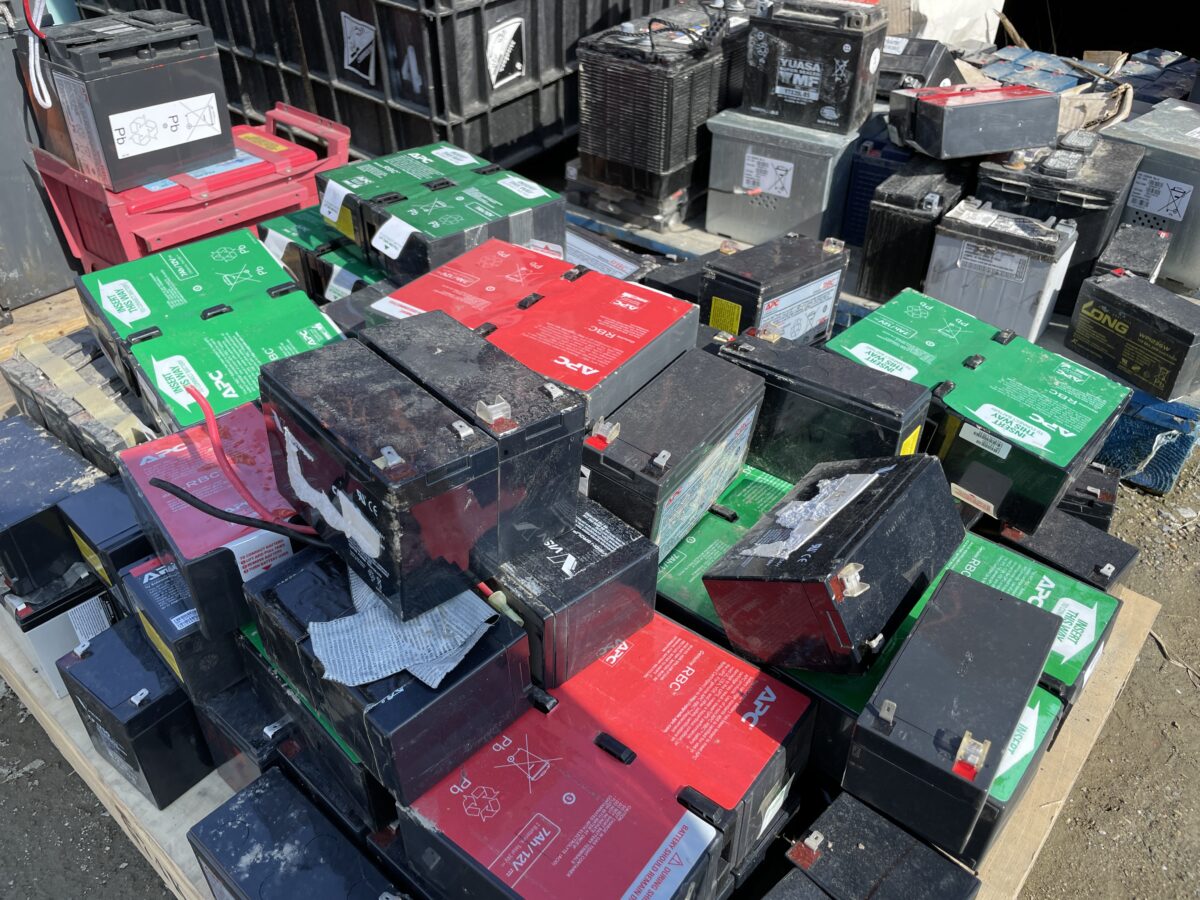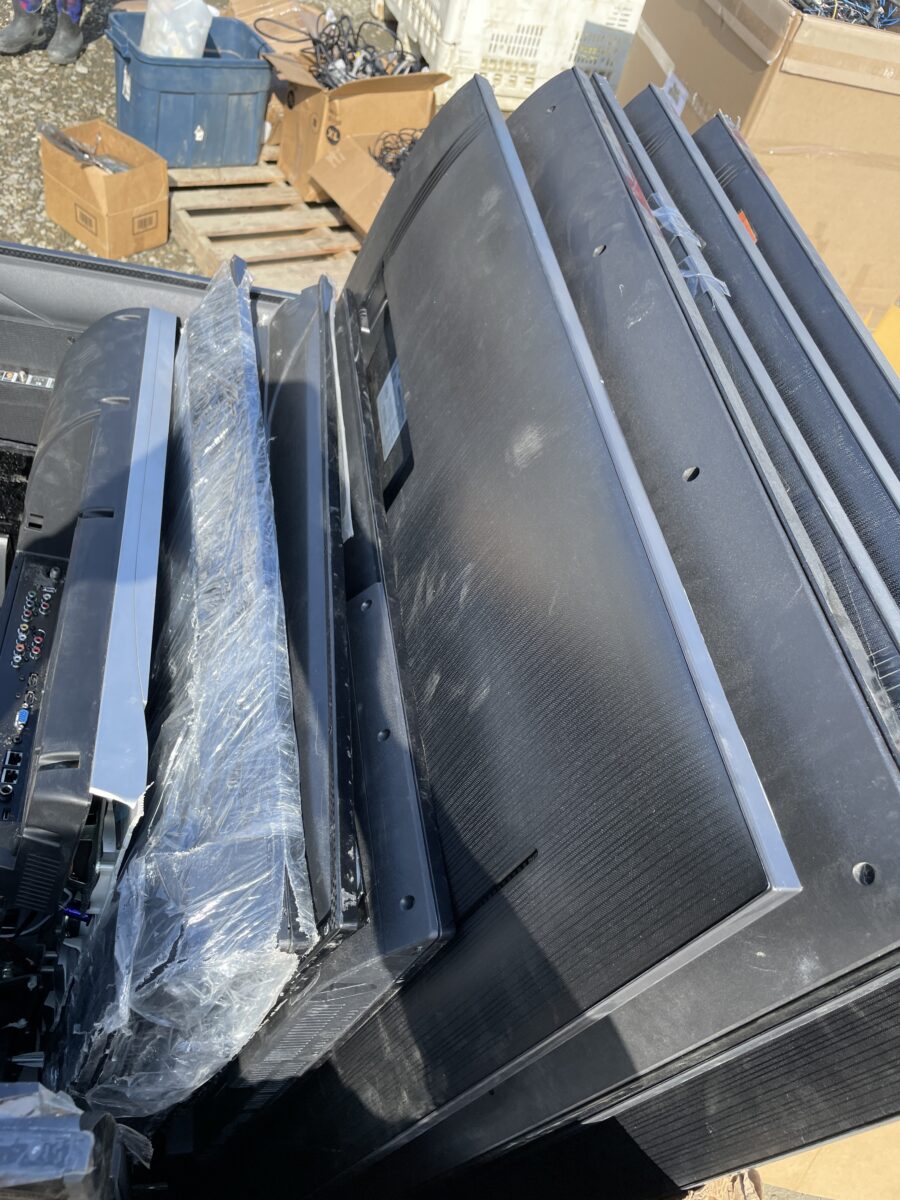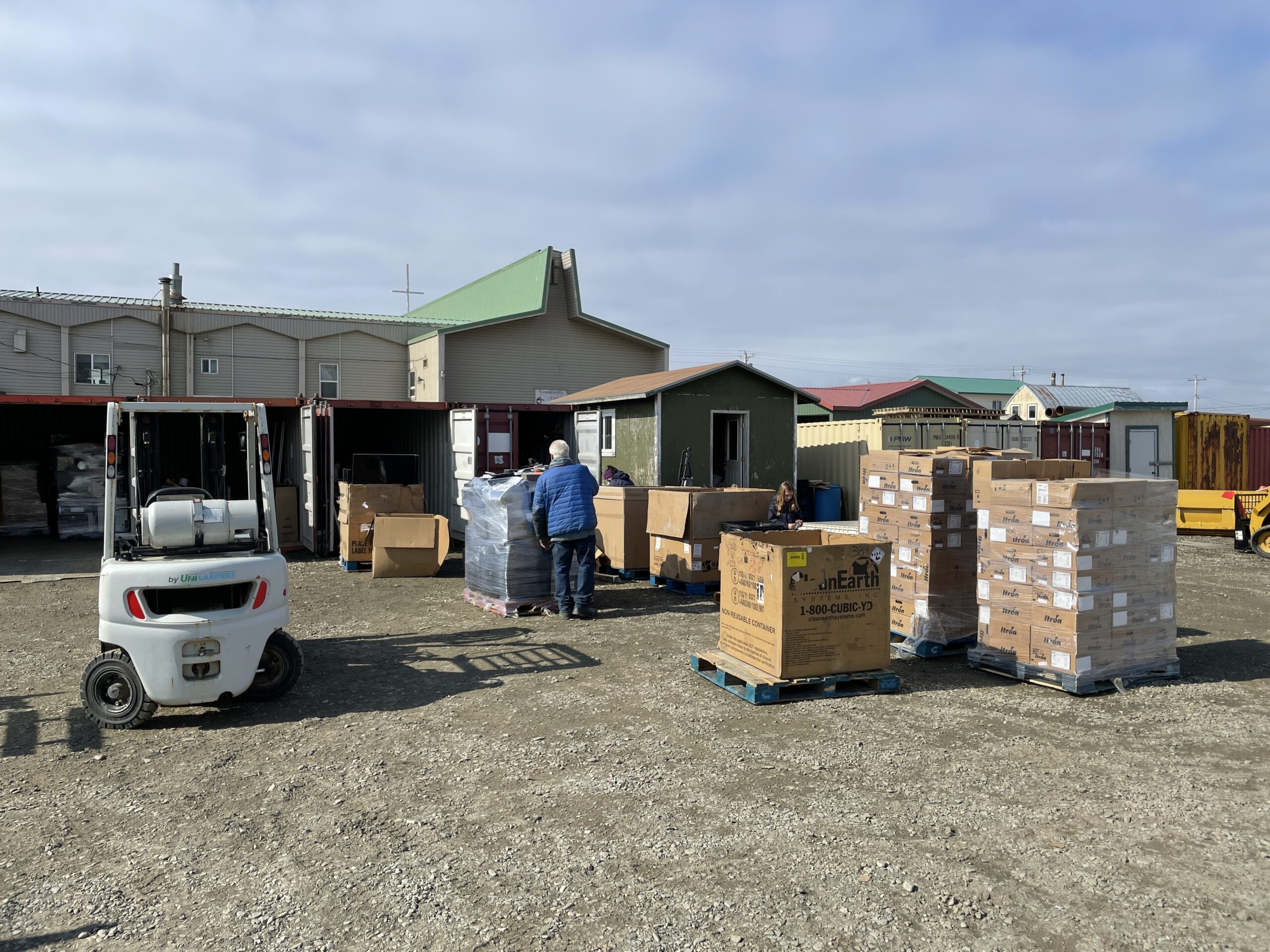Kawerak and the City of Nome partnered over the weekend, Friday, June 2 and Saturday, June 3, on an electronic waste recycling event.
The 12th annual e-waste dropoff event was held at the parking lot between Kawerak and the Methodist church. The event took a one-year hiatus during the pandemic.
Vanessa Tahbone is with Kawerak’s Environmental Program. She said the aim of the e-waste collection is to get it not only out of Nome, but Western Alaska altogether.
“In our regional communities, they have landfills that are unlined,” Tahbone said. A lot of times they have uncontrolled burning where they just are able to burn on the ground, and we really don’t want to burn any of the electronics, or possibly hazardous materials, such as lead acid batteries and those types of items because they could have cancer causing effects within the environment.”

The Environmental Protection Agency defines e-waste as electronic equipment or items that are nearing the end of their useful life, and are discarded, donated or given to a recycler.
E-waste frequently contains hazardous materials, predominantly lead and mercury. Examples of e-waste are older-style televisions with cathode ray tubes, computer towers and keyboards, laptops, cell phones and VCRs.

Tahbone said e-waste, if not removed from the region, can have devastating effects for subsistence living.
“If you have something that’s electronic and it burns, it’ll send particles into the air that could go out as far as 200 miles,” Tahbone said. “We live off the land and we do a lot of subsistence, with picking greens and berries. And then we harvest animals off the land, like caribou and reindeer, and they’re all eating off of the land and we don’t want to contaminate it.”
Tahbone said the e-waste collected in Nome will head to either Anchorage, or Seattle. All of the e-waste gathered will eventually end up at facilities in the Lower 48.
Image at top: The 12th annual e-waste dropoff event was held at the parking lot between Kawerak and the Methodist church. Photo by Greg Knight/KNOM





